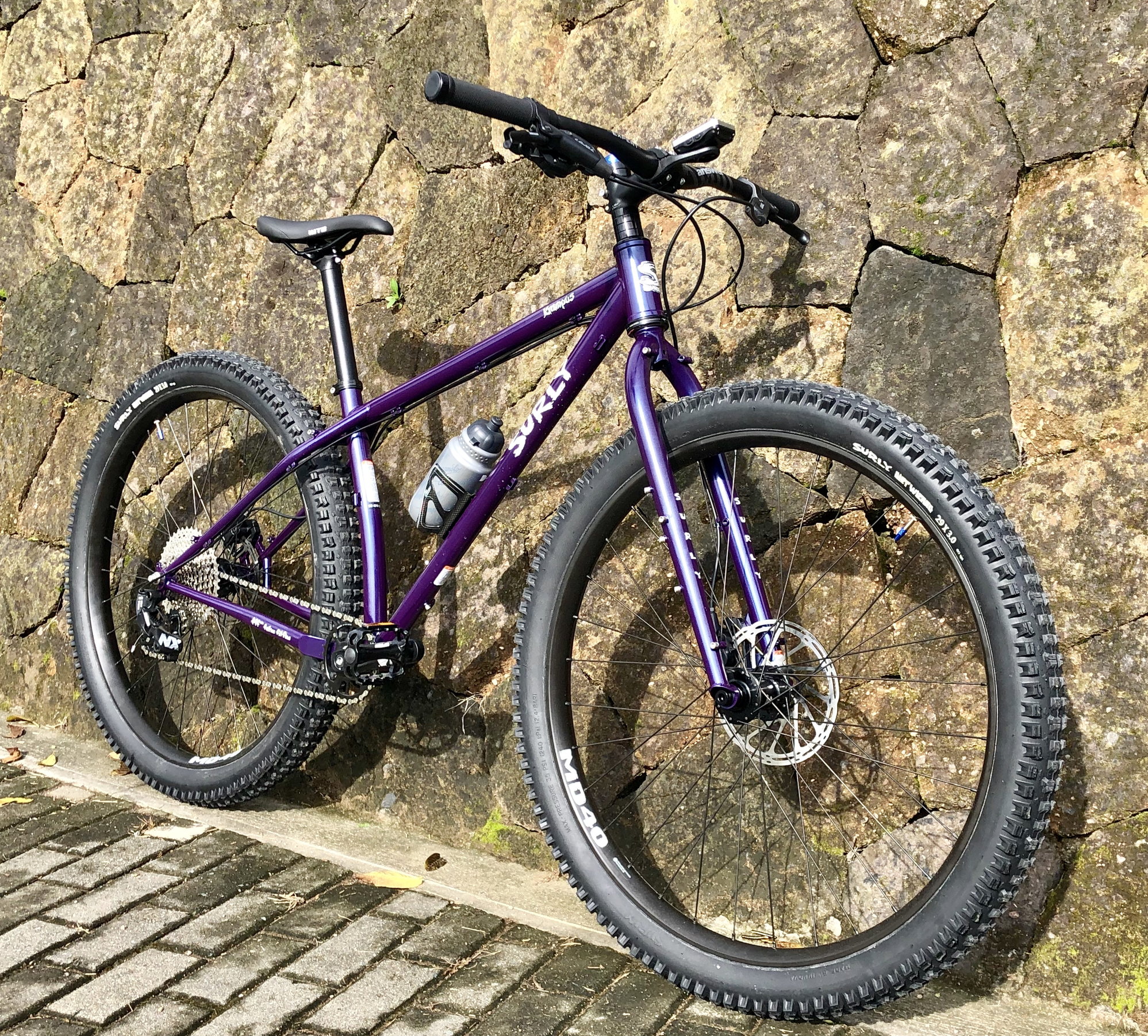


Mountain biking is an exciting and refreshing outdoor activity that allows cyclists to explore challenging trails and immerse themselves in nature. Often the question arises: “Can you mountain bike without suspension? “
Read More : ” Why Are Full Suspension Bikes So Expensive? “
The answer is yes, you can ride a mountain bike without suspension, and it depends on personal preference, riding style, and the type of terrain you face.
While mountain bike suspension systems are designed to absorb shock and vibration for a smoother ride over rough terrain, some riders take a different approach. Hardtail mountain bikes with a front suspension fork but no rear suspension provide an easier and more efficient ride.
The rigid rear of the hardtail provides direct power transfer, making it ideal for efficient pedaling, climbing, and smoother trails.
There are advantages to choosing to ride a hardtail without rear suspension. The lack of rear suspension results in a lower overall weight, making the bike more responsive and agile on the trail.
In addition, hardtail bikes tend to be more affordable than full-suspension bikes, making them an attractive option for riders on a budget.
However, it is important to note that riding a mountain bike without suspension means you will feel more bumps and vibrations on the trail. Technically rough terrain can be more difficult to navigate, as the lack of rear suspension makes it difficult to maintain traction and control.
Riders must rely on body position, trajectory selection, and agility to absorb shock and maintain balance.
Ultimately, the decision to ride a non-suspension mountain bike comes down to personal preference, riding style, and the types of trails you frequently encounter. It’s a good idea to try out different types of bikes and consider the terrain you’ll be riding to determine which option suits you best.
Whether you choose a full-suspension bike or a hardtail bike, the most important thing is to experience the thrill of mountain biking and the great outdoors.
Read More : ” Can You Mountain Bike In The Rain? “
Understanding Suspension Systems in Mountain Biking:
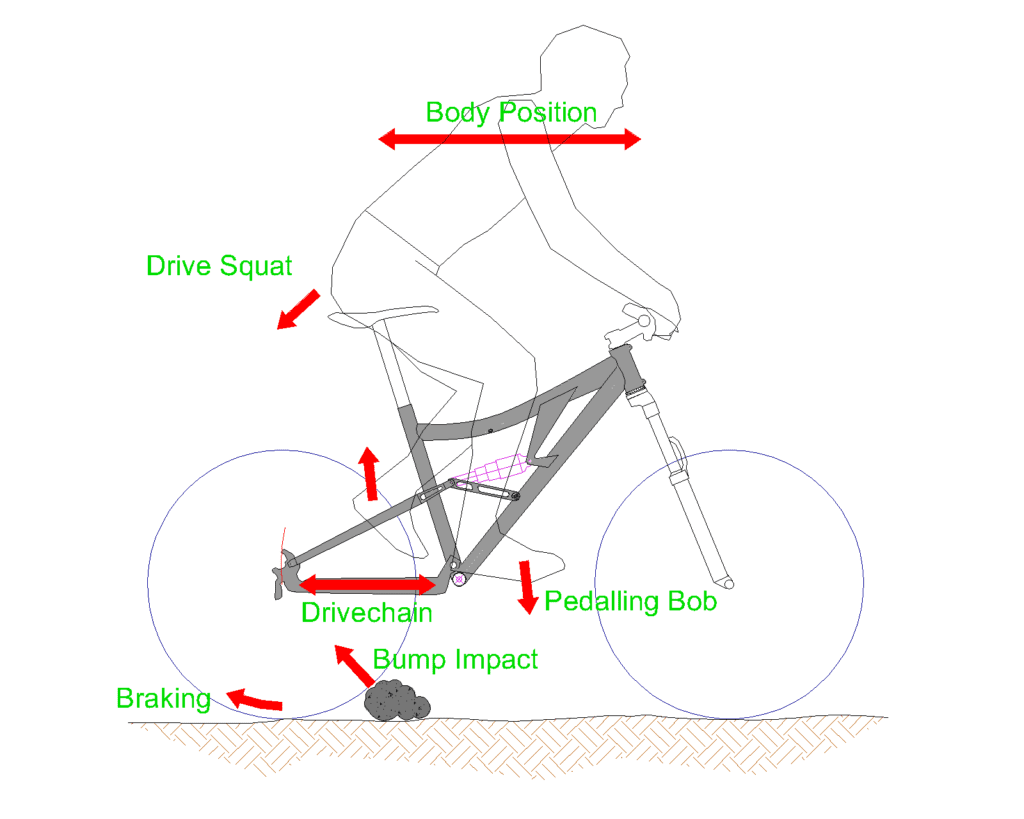


Mountain biking is an exciting sport that allows riders to tackle a wide variety of terrain, from rocky trails to steep climbs. One of the most important components of a mountain bike that enhances rider comfort and control is the suspension system.
Read More : ” Is Downhill Mountain Biking Dangerous? “
The suspension system plays an important role in absorbing shocks, maintaining traction, and providing a smooth ride.
In this article, we will delve into the ins and outs of mountain bike suspension systems and look at their main components and functions.
Suspension type:
Hardtail Suspension:
These bikes have a front fork but no rear suspension. They offer a balance between efficiency and simplicity.
Full Suspension:
This bike features front and rear suspension for maximum comfort and control on rough terrain.
Suspension components:
Front Fork:
The front fork consists of a stanchion, a lower section, and a suspension spring or air sleeve. This absorbs the impact of the front wheels and improves handling and maneuverability.
Rear shock absorbers:
Rear shock absorbers are responsible for absorbing shocks from the rear wheels. This improves traction and control, especially on technical descents.
Suspension travel:
Suspension travel refers to the maximum distance the suspension can compress and expand. This determines how well the bike can handle different types of terrain.
The short travel suspension is ideal for rough terrain and softer trails, while the long travel suspension is ideal for high-speed descents and rougher trails.
Adjustments and settings:
Suspension systems often offer adjustment options such as rebound damping, compression damping, and air pressure. This setting allows drivers to customize the suspension to suit their preferences and driving style.
Care and maintenance:
Regular maintenance is essential to keep the suspension system in optimum condition. This includes cleaning, lubricating, and inspecting components for signs of wear or damage.
Understanding a mountain bike’s suspension system is essential for riders looking for more comfort, control, and performance on a variety of terrain. Whether you opt for a hardtail or a full-suspension bike, the suspension system plays an important role in smoothing out bumps, absorbing shock, and delivering a smoother ride.
With the right knowledge and care, you can get the most out of your mountain bike suspension and take on new challenges with confidence.
Related : ” Is Front Suspension Necessary On A Hybrid Bike? “
Considerations for Riding Without Suspension:
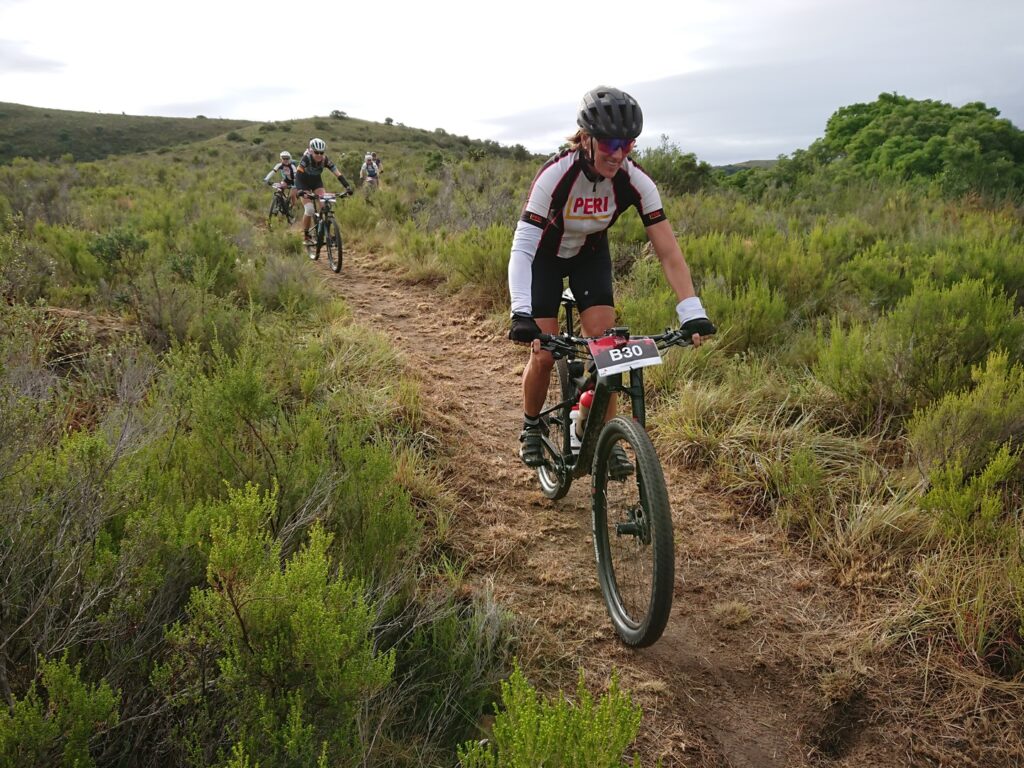


Mountain biking is an exciting and challenging sport that offers cyclists the opportunity to explore rough terrain and overcome obstacles. While suspension systems are typically used on mountain bikes to absorb shock and increase rider comfort, some riders prefer bikes without suspension.
Read More : ” Why Are Mountain Bikes Heavier Than Road Bikes? “
In this article, we’ll look at the considerations and factors to consider when driving without a suspension to help you make an informed decision based on your riding style and preferences.
Location Selection:
- Driving without suspension requires careful inspection of the terrain you plan to ride. Smoother trails, trails, and hard surfaces are better suited for non-suspension bikes because they provide a relatively smoother ride.
- Technical and rocky terrain can be problematic without suspension, as a rigid bike frame can transmit more vibrations and jolts to the rider.
Production and technique:
- Driving without suspension requires more skill and technique from the driver. Without the cushioning provided by the suspension, the driver must rely on precise body position, track selection, and maneuvering to navigate rough terrain and absorb shock.
- Driving without suspension can improve your technical driving skills and increase your ability to read tracks.
Comfort and Fatigue:
- Driving without suspension can be more physically demanding and tiring than driving with suspension. The lack of suspension means the rider absorbs more shock and vibration, which can increase fatigue, especially on long rides.
- Consider your physical fitness and endurance level when choosing a non-suspension bike, as more physical effort may be required to maintain control and ride comfortably.
Bicycle parameters and components:
- When riding without suspension, it’s important to pay attention to your bike’s settings and components. Choosing wider tires, lower tire pressures, and a comfortable seat can help reduce the impact of unsuspended riding.
- Also, consider using components like suspension seat posts or more durable rigid forks to add comfort and cushioning to your ride.
Driving style and personal preference:
- Your driving style and personal preferences play a decisive role in determining whether unsuspended driving is right for you. Some riders prefer the direct, responsive feel of a rigid motorcycle, while others may find it less forgiving and enjoyable.
- If you like the challenge and high feedback feeling that comes with unstopped driving, this may be the right choice for you.
Driving without suspension is a decision that requires careful consideration of several factors, including terrain selection, skill level, comfort, and personal preference. While it can provide a more direct and engaging driving experience, it is also difficult and requires a higher level of skill and technique.
Ultimately, the choice of suspension-free ride depends on your riding style, the track you plan to ride on, and your personal preferences.
Challenges and Limitations of Riding Without Suspension:



Mountain biking is an exciting sport that allows cyclists to explore rugged terrain and tackle difficult trails. While suspension systems are commonly used on mountain bikes to absorb shock and improve rider comfort, some riders choose to ride without suspension.
Read More : ” How Does Mountain Bike Suspension Work? “
In this article, we’ll look at the issues and limitations of driving without suspension to help you understand the potential downsides and considerations before making a decision.
Limited depreciation:
- One of the main problems of driving without suspension is limited shock absorption. Without a suspension fork or rear shock, a rigid bike frame sends vibrations and shocks directly to the rider, making the ride stiffer and less comfortable.
- Driving over rough and technical terrain can be very challenging as the driver will feel every bump and obstacle in the road.
Grip and control reduction:
- The suspension system plays an important role in traction and trail handling. Without suspension, rider traction may be reduced, especially when driving on uneven surfaces or in loose conditions.
- Lack of suspension can make handling difficult during fast descents, jumps, and aggressive maneuvers, increasing the risk of an accident or loss of control.
Fatigue and discomfort:
- Riding without suspension can increase fatigue and discomfort, especially on long journeys. The lack of cushioning puts a lot of stress on the rider’s body as they have to rely on body position and technique to absorb the impact.
- Constant vibration and jolts can cause even more fatigue, which lowers stamina and stamina.
Impact on the body and joints:
- Driving without suspension puts additional stress on the body and joints of the rider. Repeated shaking and vibration can cause increased strain on the wrists, arms, shoulders, and lower back.
- Riders with joint or back problems may find it more difficult to ride without suspension, as this can exacerbate discomfort and increase the risk of injury.
Track selection and restrictions:
- Driving without suspension may require more careful track selection. Without the cushioning provided by the suspension, rough, technical terrain with big obstacles or big drop-offs probably wouldn’t be as fun and safe.
- When choosing a route, it is important to consider your skill level, driving experience, and comfort level to ensure safe and enjoyable driving.
While driving without suspension can provide a unique and exciting driving experience, it is important to be aware of the challenges and limitations associated with it. Limited shock absorption, reduced traction, increased fatigue, and impact on the body are factors that a rider should carefully consider before opting for a non-suspension motorcycle.
Pros of Mountain Biking Without Suspension:
- Weight: Bikes without suspension tend to be lighter, making them easier to handle and maneuver.
- Efficiency: Hardtail bikes transfer more power directly to the pedals, resulting in better pedaling efficiency.
- Price: Bikes without suspension are generally more affordable than full-suspension bikes.
- Maintenance: With fewer moving parts, hardtail bikes require less maintenance and are easier to maintain.
Cons of Mountain Biking Without Suspension:
- Comfort: Without suspension, hardtail bikes can be less comfortable on rough and bumpy terrain.
- Impact and Fatigue: Riding on challenging trails without suspension can lead to increased fatigue and impact on the body.
- Limited Terrain: Hardtail bikes may have limitations on tackling extremely technical and rough terrains.
- Control: Suspension helps in maintaining better control and traction, especially on uneven surfaces.
Assessing your riding style, skill level, and the types of trails you frequently use is key to determining if bareback riding is right for your riding preferences and goals.
Choosing the Right Bike for Your Riding Style:
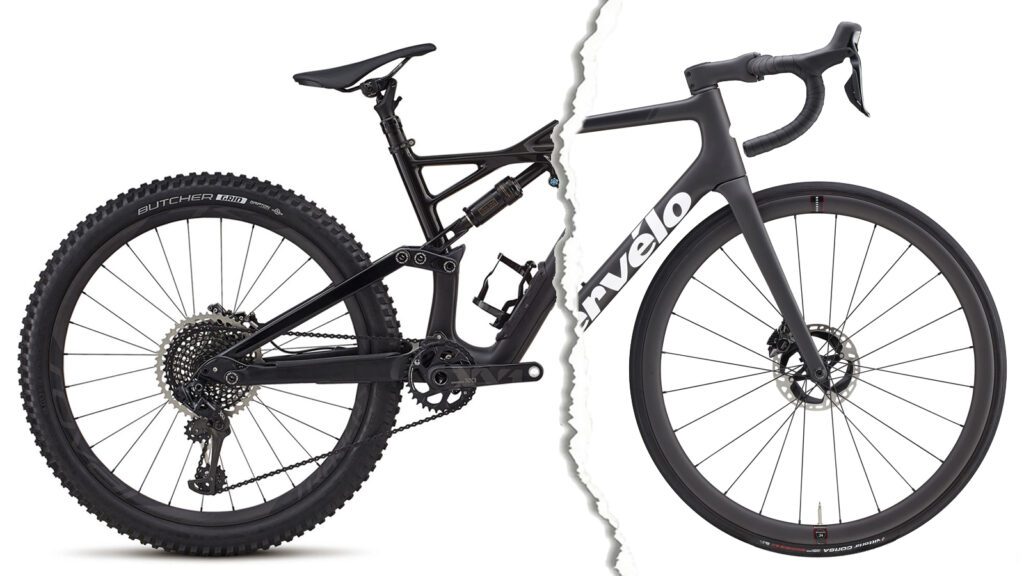


Mountain biking is a diverse sport with different disciplines and riding styles, each requiring specific cycling characteristics. Whether you enjoy cross-country racing, downhill racing or cross-country adventures, choosing the right bike for your riding style is crucial to delivering the best riding experience.
Read More : ” Can Bike Riding Cause Prostate Problems? “
In this article, we’ll look at factors to consider when choosing the right mountain bike for your riding style and preferences.
Cross-country skiing:
- Cross country emphasizes endurance and speed over long distances and rough terrain.
- Look for a lightweight, efficient bike that focuses on climbing ability and pedaling efficiency.
- Consider a hardtail or full suspension bike with shorter travel for better climbing performance.
Equestrian track:
- The trail includes a combination of climbs, descents and technical sections on a single track course.
- Choose a midrange (120-140mm) all-round bike that combines climbing efficiency with the ability to descend.
- Full suspension bikes with adjustable suspension settings and fixed geometry are ideal for off-road cycling.
Downhill driving:
- Downhill (DH) focuses on descents, jumps and technical sections.
- Choose a full suspension bike with longer range (150mm or more) and a solid frame to meet the demands of aggressive downhill riding.
- For maximum control and stability, look for a bike with loose geometries, strong components and a strong braking system.
Enduro riding:
- The Enduro combines elements of downhill and cross country with an emphasis on timed downhill stages and challenging climbs.
- Consider a medium to long (140-170mm) full suspension travel bike that combines climbing efficiency with downhill speed.
- Look for a bike with adjustable suspension, strong frame construction and durable components to withstand the rigors of enduro racing.
Freeride and bike parking:
- Freeride and bike parks include jumps, falls, and specs on dedicated bike parks or specially designed tracks.
- Choose a strong and durable bike with full suspension, long travel (160mm or more) and a reinforced frame.
- Look for a bike with durable wheels, durable suspension components and reinforced frame guards to withstand the rigors of freeride and parking lot cycling.
Choosing the right bike for your riding style is key to providing an enjoyable and optimal mountain biking experience. When choosing a bike, consider factors such as terrain, riding preferences, skill level, and intended use. Consult experienced cyclists or go to a reputable bike shop for advice and testing different models.
Remember, the perfect bike is one that fits your riding style and gives you pleasure and confidence on the trails.
Exploring Different Terrain and Trail Types:
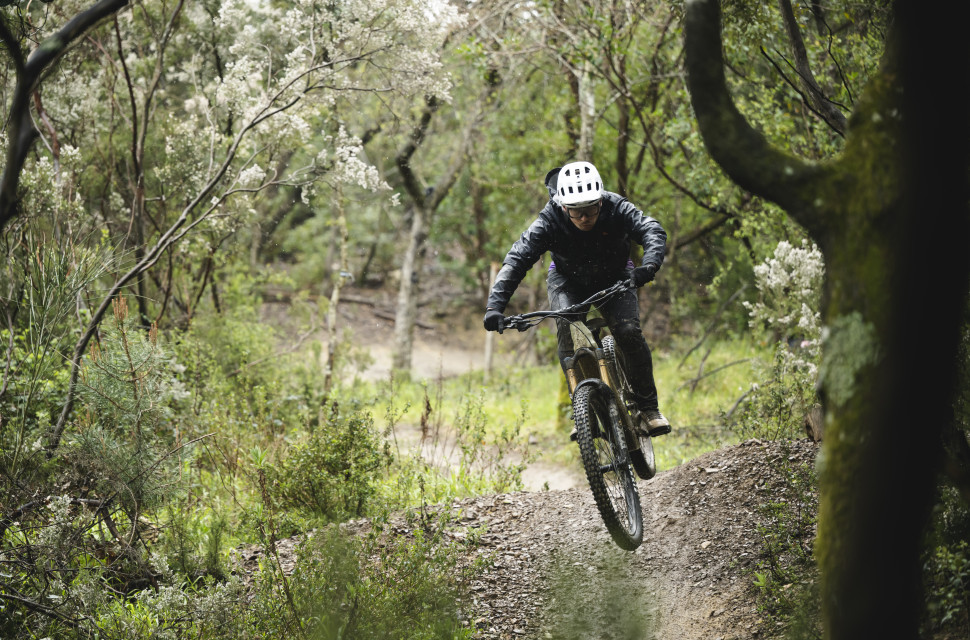


One of the great things about mountain biking is the ability to explore a wide variety of terrain and trail types. From cascading single-lane trails to technical rock gardens and steep drops, each terrain presents a unique challenge and adventure.
Read More : ” How Many Gears Does A Mountain Bike Have? “
In this article, we’ll take a look at the different types of terrain and trails commonly found on mountain bikes and look at the skill and attention to detail it takes to navigate them.
Cross-country ski trails:
- Cross-country skiing (XC) trails are typically characterized by a combination of climbs and gentle descents that emphasize endurance and speed.
- These trails often feature a variety of terrain, including dirt, gravel, and forest trails.
- Cross-country skiing requires good stamina, efficient pedaling technique, and the ability to navigate a variety of terrain and obstacles.
Technical singletrack:
- Technical single tracks are narrow tracks with difficult elements such as rocks, roots, and tight turns.
- This route requires advanced cycling skills, including correct trajectory selection, balance, and quick reflexes.
- Technical single-lane driving requires the ability to maintain control and balance over rough terrain, tight curves, and over obstacles.
Descending descent:
- Downhill courses are designed for steep climbs, jumps, dips, and high-speed descents with ledges.
- Downhill requires a combination of cycling skills, including proper body position, pumping, and braking techniques.
- The rider needs to be comfortable at higher speeds, control the bike’s suspension and maintain control in technical and fast sections.
Bicycle parking:
- It offers a range of purpose-built trails, including a bike park, a jump, a streamlined shape, and a technical downhill section.
- Riding in a bike park requires the ability to jump, swing and move through artificial structures.
- Cyclists should familiarize themselves with bicycle parking etiquette, such as bowing to other cyclists and obeying parking rules.
All mountain/enduro trails:
- Mountain trails or enduro trails include elements of various terrains and types of trails, including climbs, descents, technical sections, and natural features.
- Driving on any mountain road requires a wide range of skills, including walking prowess, technical skill, and the ability to negotiate any terrain.
- Riders must have good stamina, the ability to adapt to changing road conditions, and versatile cycling skills.
Mountain biking offers the perfect opportunity to explore different types of terrain and trails, each with its own set of challenges and rewards. Whether you’re into athletics, flying downhill, or enjoying the speed of the trail, it’s important to match your skills and technique to the terrain.
By improving your cycling skills, developing endurance, and gaining experience on various trails, you will become a versatile mountain biker, ready to overcome any terrain that comes your way. So go there, go on an adventure, and feel the excitement as you explore different terrains on your quad bike.
Enhancing Skills and Techniques for Riding Without Suspension:



Riding an unsprung mountain bike can present several challenges, but it can also be a rewarding experience that hones your riding skills. Whether you choose a rigid bike or a hardtail, mastering the technique and adapting it to your riding style can be crucial.
In this article, we’ll look at skills and techniques to help you improve suspension-free riding and get the most out of your bike.
Choose the correct row:
- It is very important to choose the smoothest and most efficient line on the track, without suspension.
- Anticipate obstacles and anticipate obstacles by choosing a path avoiding rough terrain, rocks, and roots.
- It requires focus, focus, and the ability to quickly assess the path ahead.
Body position:
- Proper body position is very important when riding without suspension.
- Adopt an active position with knees slightly bent, elbows out, and weight on the bike.
- Use your legs and arms as natural shock absorbers to absorb shock and stay stable.
Smooth and Fluid Ride:
- A smooth, supple ride can help compensate for the lack of suspension.
- Accelerate between turns and obstacles using your body and your bike to move around the track.
- Maintain a steady cadence and avoid sudden braking or acceleration to minimize the impact of rough terrain.
Tire pressure and tire selection:
- Adjusting the tire pressure can make a big difference in terms of comfort and traction.
- Experiment with different tire pressures to find the right balance between grip and rolling resistance.
- Consider using wider tires with more aggressive tread patterns for more traction and stability.
Strong technical development:
- Focus on developing strong cycling skills such as proper braking, cornering, and hand control.
- Stop sooner and more effectively, using your body weight to distribute the braking force.
- Improve your cornering skills by leaning on the bike and maintaining a stable position.
Development of strength and endurance:
- Driving without suspension can be more physically demanding, requiring more strength and endurance.
- Combine non-cycling training and strength training to strengthen your core, upper body, and legs.
- Work on cardio to build endurance and keep you energized on long rides.
Driving without suspension can be difficult, but it can also be a rewarding experience that will improve your driving skills. By choosing the right line, mastering your body positions, moving smoothly, and developing solid technique, you can overcome the limitations of riding without suspension. Remember to experiment with tire pressure and tire selection to optimize traction and comfort.
Plus, building strength and endurance will support your ability to tackle rough terrain. Take this opportunity to improve your skills and technique and enjoy the unique experience of mountain biking without suspension.
Pros and Cons of Mountain Biking Without Suspension:
| Pros | Cons |
| Lighter weight for improved agility | Limited shock absorption on rough terrain |
| More efficient power transfer | Increased discomfort on bumpy trails |
| Lower maintenance and cost | Reduced control and stability on jumps |
| Easier climbing on smooth surfaces | Greater impact on joints and body |
| Suitable for smoother trails and roads | Less forgiving on technical descents |
Conclusion:
“Can you mountain bike without suspension?” The answer is yes, you can make a mountain bike without suspension. While suspension systems are widespread and have many benefits, driving without suspension can still be enjoyable and rewarding.
It requires a different approach and some technical tweaks, but it can be an opportunity to hone your skills and expand your driving skills.
By choosing the right lane, controlling your body position, moving smoothly and smoothly, and developing solid technique, you will be able to drive down the track with confidence and precision. Tire pressure and selection play an important role in optimizing traction and comfort while developing strength and endurance will help you handle the demands of rugged terrain.
Whether rigid bike or hardtail, non-suspension mountain bikes will allow you to feel a direct connection to the trail and develop a heightened sense of control. Take on the challenge, adapt your riding style, and explore the possibilities of mountain biking without suspension.
With the right skills, technique, and mindset, you can have an exhilarating and enjoyable experience without even stopping on the track.
FAQs:
What do you call a mountain bike without suspension?
A mountain bike without suspension is commonly referred to as a “rigid” bike or a “hardtail” bike, as it only has front suspension or no suspension at all.
Do you really need suspension on a bike?
The need for suspension on a bike depends on the type of riding you do. Suspension helps absorb shocks and improve comfort on rough terrain, making it beneficial for off-road and trail riding.
Does a mountain bike need full-suspension?
Whether a mountain bike needs full-suspension depends on the rider’s preferences and the type of terrain they ride on. Full-suspension bikes offer enhanced comfort and control on rough and technical trails.
Which bicycle is better with suspension or without suspension?
The choice between a bicycle with or without suspension depends on the rider’s preferences and the type of terrain they ride on. Suspension offers enhanced comfort and control on rough trails, while rigid bikes provide simplicity and efficiency on smoother surfaces.
Why do hybrid bikes not have suspension?
Hybrid bikes are designed for versatility and efficiency on various terrains. They typically prioritize a lightweight and responsive frame, sacrificing suspension to enhance speed and agility on roads and smoother surfaces.



Welcome to Bikegenics, where passion meets performance! We are a leading online destination for all things related to mountain biking, dedicated to providing you with top-notch gear, expert advice, and an immersive community to fuel your two-wheeled adventures. With a commitment to excellence and a deep love for the sport, we strive to elevate your biking experience to new heights.

⭐⭐⭐⭐⭐